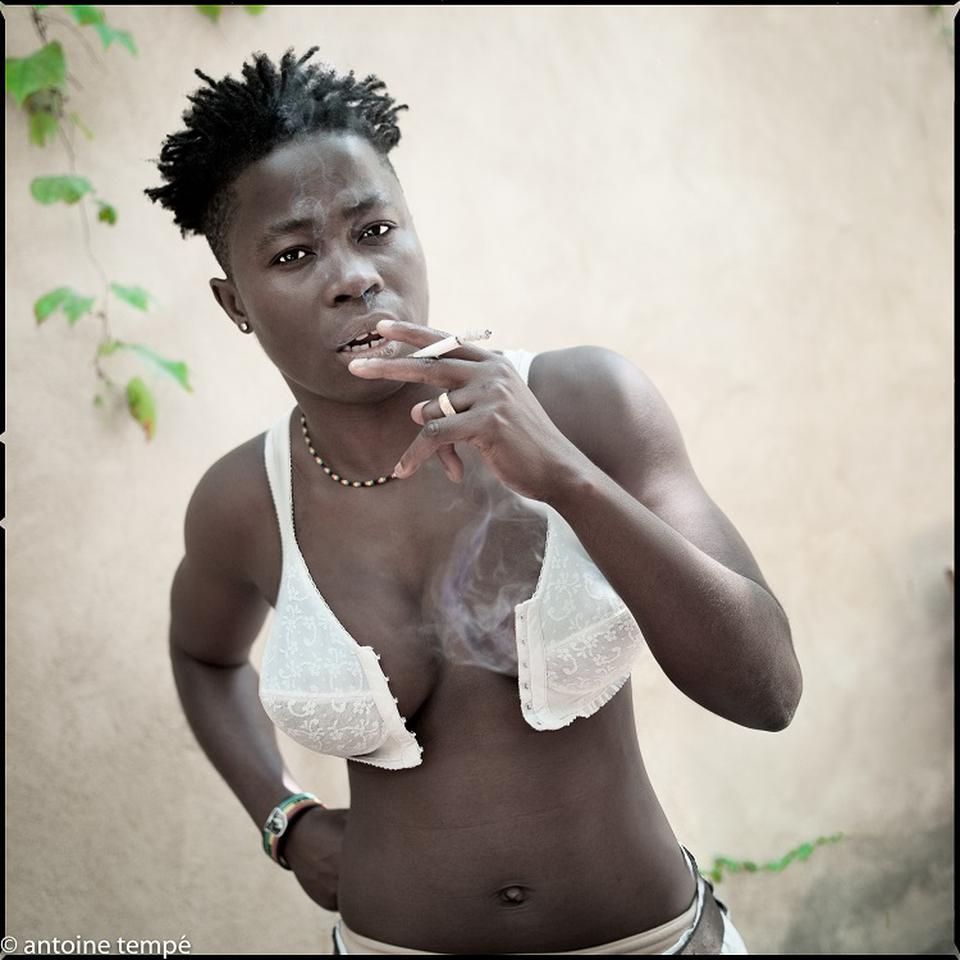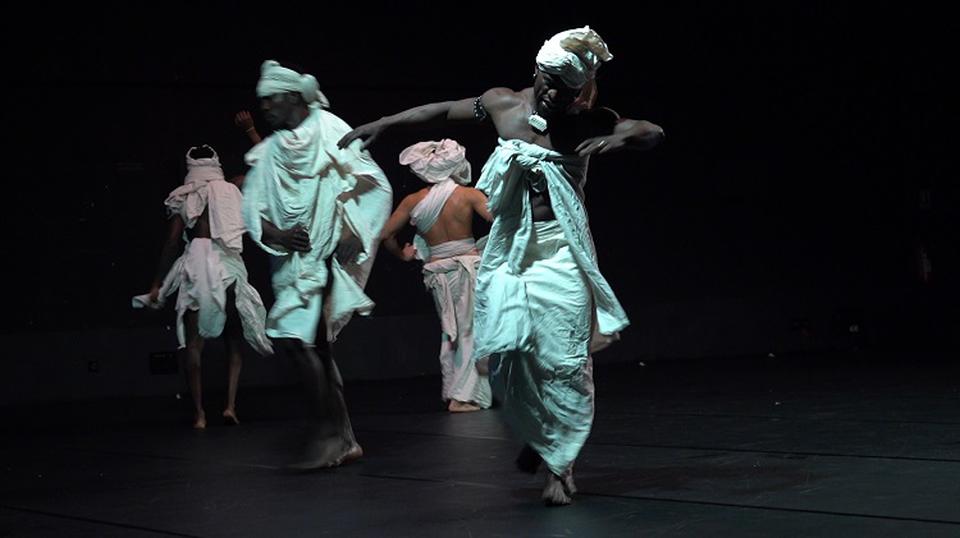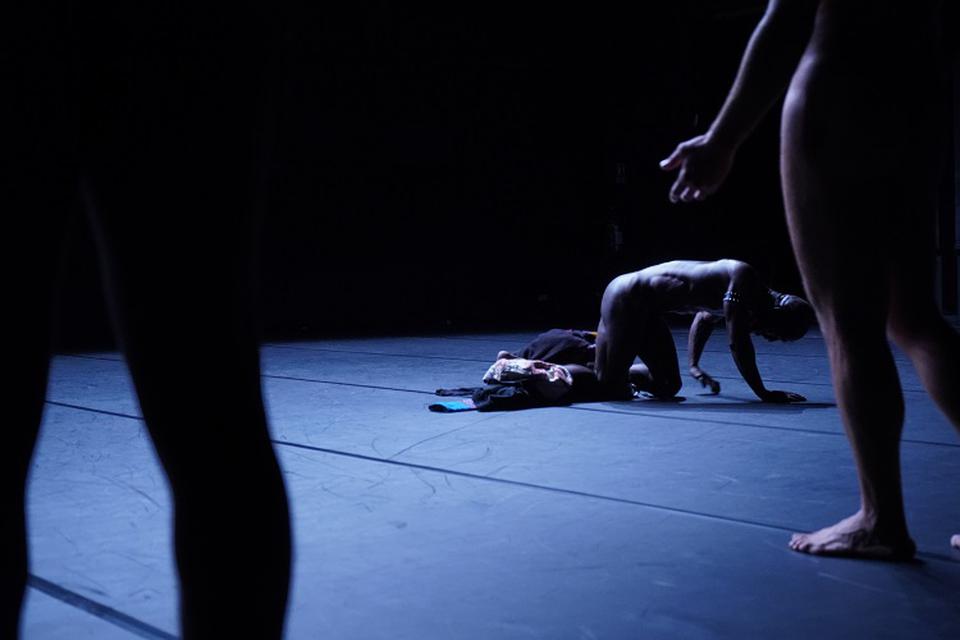L'Homme rare
Performing a swaying walk, which can be both lively and sinuous, and supple undulations and movements from the waist, the faces of the five dancers choreographed by Franco-Ivorian Nadia Beugré are not visible. The choreography that connects them and which is executed solely using their backs is inspired by dance techniques and styles that principally utilise the pelvis. With the insistent use of buttocks, these practices are seen as being more feminine, challenging or even chipping away at a strongly built and assimilated masculinity. If the issue of gender has always featured in Nadia Beugré’s work, in L’Homme rare she tackles it more head-on by offering an inversion of the perception of “male / female attributes” and questioning the attention paid to bodies and the qualities attributed to their movements. Starting with a game that blurs our perceptions of gender, the choreographer places the spectator in the position of a voyeur, which the artist connects to the outcome of her research on our understanding of the body, notably black and male, in history and today. With references to a series of old photographs of slave markets in the Ivory Coast consulted by the artist, L’Homme rare also becomes a reflection on the history of Europeans’ gaze on black bodies and its persistence today.
- Presentation
- Kunstenfestivaldesarts, Théâtre la Balsamine
- Creation, choreography
- Nadia Beugré
- Performers
- Lucas Nicot, Daouda Keita, Nadim Bahsoun, Tahi Vadel Guei, Marius Moguiba
- Technical direction, light
- Anthony Merlaud
- Lighting control
- Beatriz Kaysel Velasco
- External eye
- Faustin Linyekula
- Executive Production
- Libr’Arts / Virginie Dupray
- Production
- Studios Kabako & Latitudes Contemporaines
- Coproduction
- Kunstenfestivaldesarts, Théâtre de la Ville, Festival d’Automne à Paris, Montpellier Danse 2019/2020
- Residency
- Agora – cité internationale de la danse
- Residency supported by
- Fondation BNP Paribas, CCN2 – Centre Chorégraphique National de Grenoble, Centre Chorégraphique National d’Orléans (direction Maud Le Pladec), Kunstencentrum Vooruit, Musée de la Danse – Centre Chorégraphique National de Rennes et de Bretagne, BIT Teatergarasjen, Théâtre de Nîmes
- With the support of
- L’échangeur CDCN Hauts-de France (Studio Libre) and DRAC Occitanie – French Ministry of Culture and Communication





